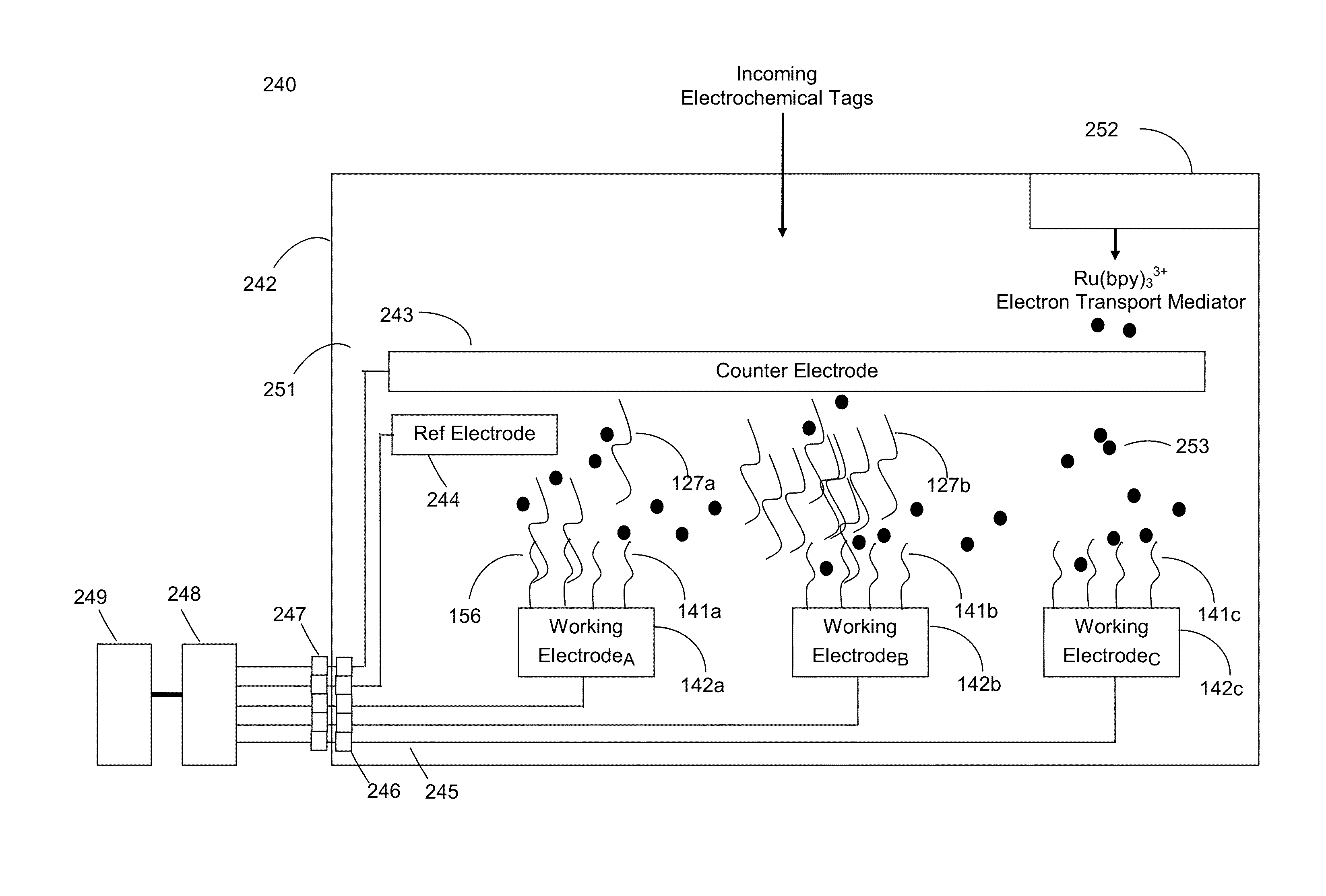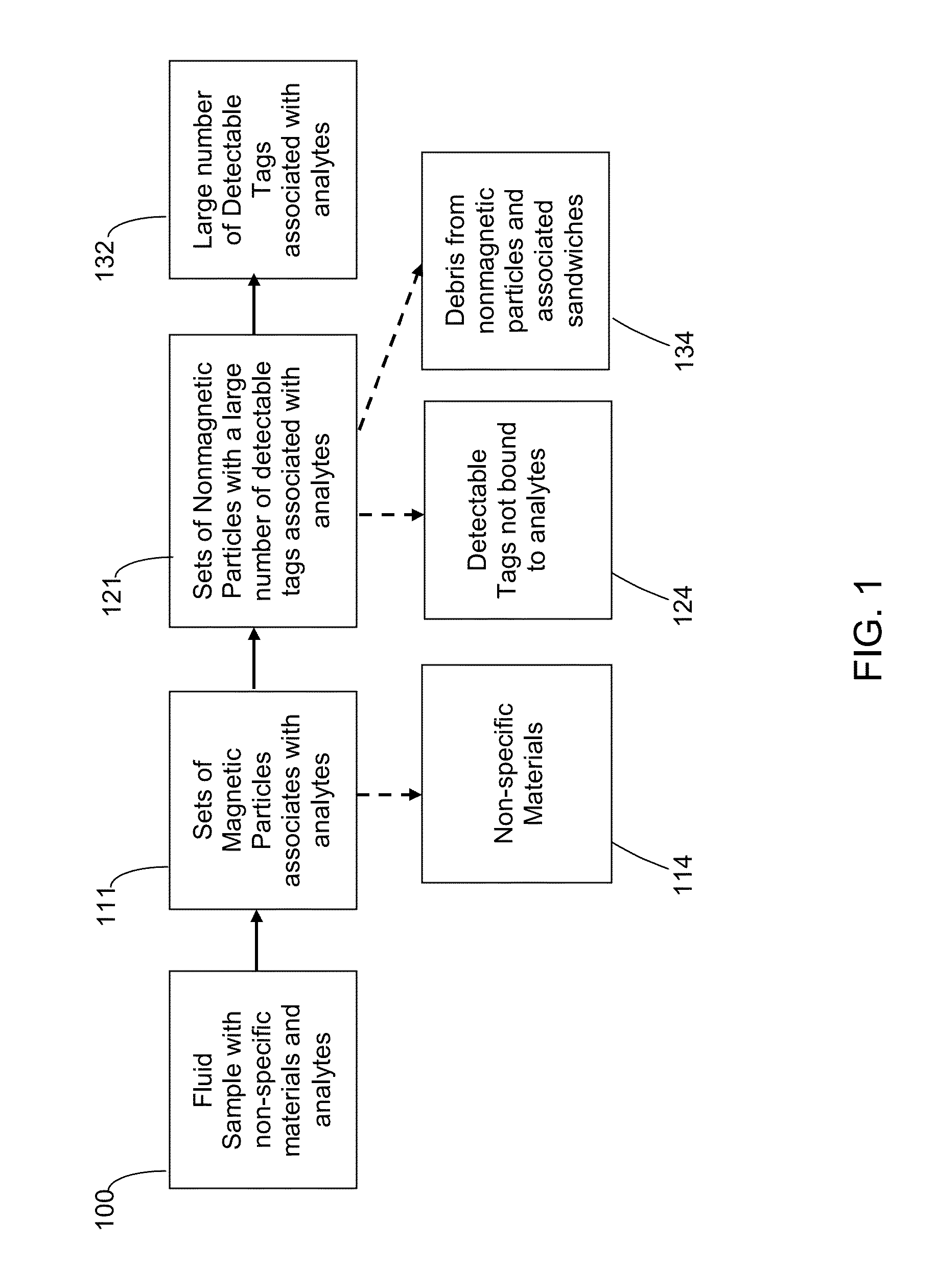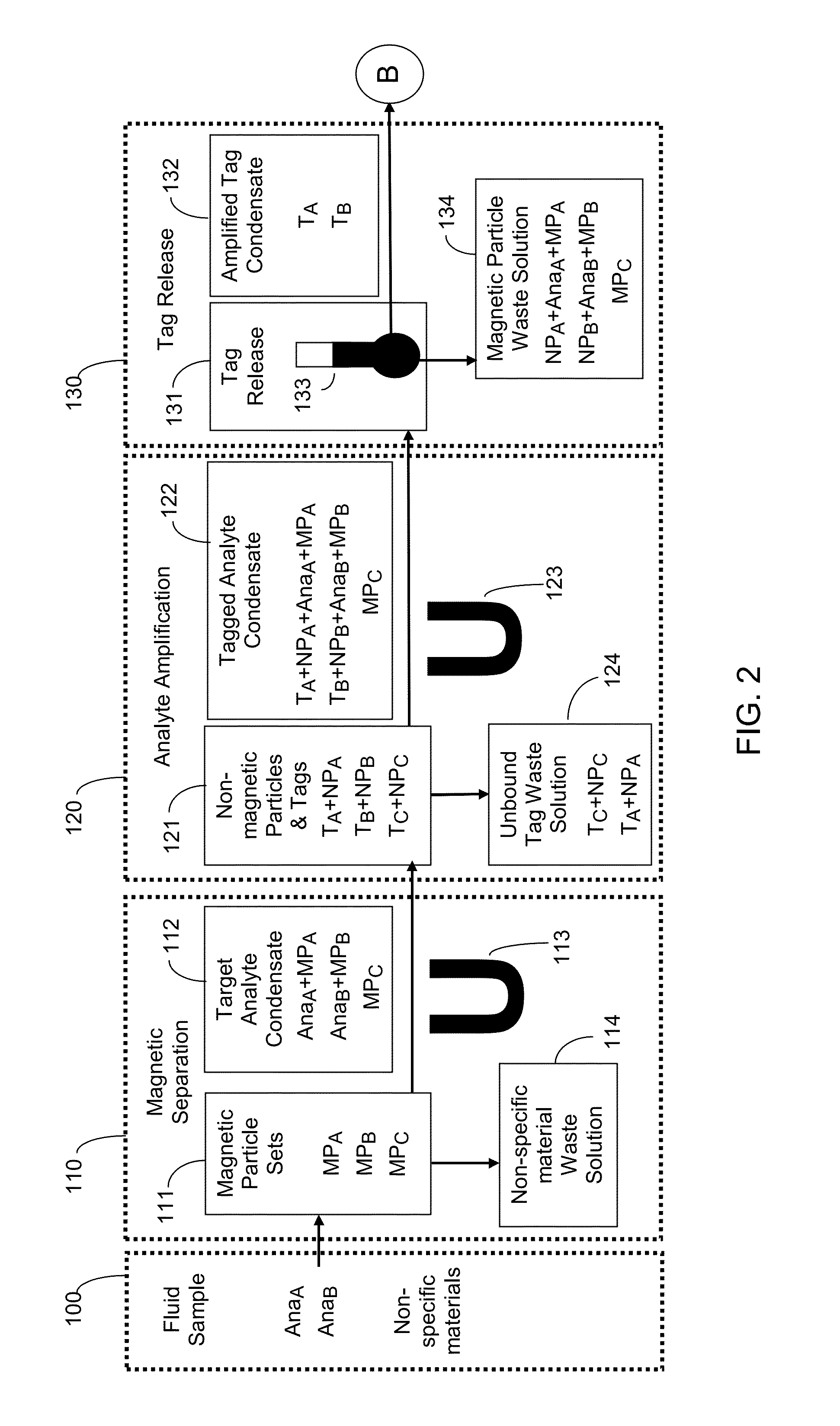Ultra-sensitive detection of extremely low level biological analytes using electrochemical signal amplification and biosensor
a biosensor and ultra-sensitive technology, applied in the field of biological assays, can solve the problems of false negative results, difficult and costly assay accuracy, and inability to accurately assay biological analytes accurately,
- Summary
- Abstract
- Description
- Claims
- Application Information
AI Technical Summary
Benefits of technology
Problems solved by technology
Method used
Image
Examples
example 1
[0237]Determination of New Assay Requirements: An assay was required to measure approximately 5×10−21 M E. coli O157:H7 analytes in a 1 mL liquid solution with at least 2 orders of magnitude linear dynamic range. The number of analytes to be detected from 1 mL was calculated to be 5×10−24 mols, or approximately 3 molecules by multiplying the number of mols by Avogadro constant of 6.02×1023 / mol. A graphene oxide—glassy carbon working electrode was selected with 1 mm2 surface area which is capable of measuring at least approximately 1×108 guanine molecules. The required amplification ratio was estimated to be at least 5×107 guanines per analyte based on the sensor detection capability of 1×108 guanine molecules divided by 3 target molecules divided by about 60% recovery from the antibody matched pairs. According to Table 10, approximately 1×108 guanines could be delivered per bead using 15 micron diameter polystyrene beads with a capacity of 7×106 oligonucleotides per bead and 20 guan...
example 2
[0238]Calculation of Inputs: Commercially available polystyrene beads were identified from multiple suppliers in 15.28 micron diameter size. The oligonucleotide loading capacity was determined to be about 7.3×106 guanine rich oligonucleotides per bead. Approximately 7.5×1013 guanine rich oligonucleotides were available from a 2.5 μL volume of 5 μM oligonucleotide concentration and mixed with 100,000 beads from a 20 μL volume and 10 g / μL concentration. This provided approximately 7.5×108 guanine rich oligonucleotides per bead with sufficient oligonucleotides to saturate the 15.28 micron bead surface with oligonucleotides.
TABLE 11Computation of Inputs for Required Amplification RatioParameterInputsAssay RequirementsMaximum Guanine Oligos per BeadNonmagneticDiameter15.28 microns7.3 × 106Beadsguanine rich oligos / beadGuanine Oligo SolutionGuanine richVolume2.5 μL7.5 × 1013oligonucleotidesConcentration5 μMguanine richoligosNonmagneticVolume20 μL1.0 × 105beadsConcentration10 g / μLnonmagneti...
example 3
[0239]Preparation of Nonmagnetic Particles with Guanine Tags: Approximately 20 μL of nominally 15.28 micron diameter commercial polystyrene microspheres precoated with avidin (Bangs Laboratories, Inc., Fishers, Ind.) were pipette into a 1.5 mL Eppendorph tube with 2.5 μL deionized water and 2.5 μL of 5 pM oligonucleotide tags containing 20 guanines of 30 bases GTG GGT GGG TAA GGA GTG AGG GTG GGA GTT. The solution was incubated for 20 minutes at room temperature with pipette mixing then centrifuged. The supernatant was removed and the solution was washed with 500 μL deionized water followed by repeated centrifuge, supernatant removal and washing. Then 25 μL of 1 mg / mL Anti-Escherichia coli O157:H7 Antibody, Biotin-labeled (KPL Inc., Gaithersburg, Md.) was added, pipette mixed and incubated for 15 minutes at room temperature. The particles were washed with Imidazole Buffered Saline and Tween (KPL Inc., Gaithersburg, Md.) diluted 20:1 by adding 500 μL, centrifuge, and removing supernat...
PUM
| Property | Measurement | Unit |
|---|---|---|
| diameter | aaaaa | aaaaa |
| surface area | aaaaa | aaaaa |
| size | aaaaa | aaaaa |
Abstract
Description
Claims
Application Information
 Login to View More
Login to View More - R&D
- Intellectual Property
- Life Sciences
- Materials
- Tech Scout
- Unparalleled Data Quality
- Higher Quality Content
- 60% Fewer Hallucinations
Browse by: Latest US Patents, China's latest patents, Technical Efficacy Thesaurus, Application Domain, Technology Topic, Popular Technical Reports.
© 2025 PatSnap. All rights reserved.Legal|Privacy policy|Modern Slavery Act Transparency Statement|Sitemap|About US| Contact US: help@patsnap.com



